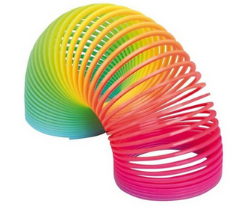- What makes a fidget toy what it is?
- Sensory fidget toys for adults and kids
- Best products to use at home and school for reducing stress
- Spinners for classroom learning
- Top ways to help focus, keep calm and ease the mind.
- Fidget Toys for Sensory processing
- Fiddle toys to help manage emotions
- Managing behaviour
- Help manage aggression and bad behaviour with these items
Fidgeting and associated toys to remove anxiety behaviour
There’s more to meet the eye with fidget toys. Although they may just look like another thing to play with, they are a rather complex tool.
Anxiety is a complex issue and there are so many reasons why children experience it. To combat stress, you need the right tools for the right situation. “Fit in your pocket” fidget toys to the rescue!
There is a science behind these angst-reducing tools! They are designed for different agitation-causing purposes. How do you know what spinning toy or fidget spinner to use? Here is the ultimate guide about spinners to reduce worry in 2021!

What makes a fidget toy what it is?
Fidgets are tools designed for focus and attention. It helps the brain filter out extrasensory information. It is often this sensory overload of information that causes a person to be fidgety, anxious, or out of control (1).
Thanks to their repetitive nature, items that you can twiddle are an outlet to transfer extra energy. A lot of youngsters with discomfort, ADHD, or autism use them. So why are thousands of kids around the globe catching on with the latest trend and putting into their pockets a toy that replaces the twitch, wriggle and squirms when anxious times arise.
They Help Increase Focus
For some children with concerns around a lack of focus, fidgeting give youngsters a natural outlet which increases concentration.
When parents or teachers try to get minors to “sit still,” anxiety rises in children. They want to move!
Fidgeting and spinning toys alleviate that tension. A new study from the Journal of Abnormal Child Psychology found when kids with ADHD had opportunities to use their motor skills, sitting in class increased (2). Spinners are a great way for children to vent out their motor skills while in school.
Helps With Self-Regulation
When kid’s senses overstimulate, their angst levels go up.
Games or gadgets that kids get their fingers on help to decrease unease. The repeated movement, like pressing, squeezing, rolling or spinning, is soothing for them.
Youngsters of all ages love tactile things that have colour and variety. They provide fun ways to get some tension relief while working on self-regulation.
Reduces Distractions
Giving someone a toy to play with to help focus might sound odd but surprisingly things that promote fidgeting decrease distractions.
Sometimes children experiencing unease are more distracted by their angst than the actual things causing the worry. Like a child with autism who is more distracted by their uneasiness than the bright lights.
When given a hand held object that they can twiddle, squish, push, spin, twirl or twist, toddlers can zone out and not think about their distractions. This repeated movement keeps them calm. Now let’s look at the fidgeting items in more detail.
How do you know which one you need?
How do you know when to use it?

Sensory fidget toys for adults and kids
When children have agitation, they have strain! Thankfully there are fidget toys out there that have a calming effect! When your kiddo is pressurized, try one of these worry reducing tools.
Squishy Balls
The durability of squishy balls are perfect for lowering tension! When people feel tense, they need relief. Digging their fingers into a palm sized sphere is a great release. These hugely popular items come in a range of sizes, colours and textures to satisfy all kinds of sensory needs. Simply put, the more kids play with them, the more they relax.
Putty
Putty takes worry relief one step further. Putty is excellent at bringing calm because you can mould, pull, stretch, or form it into other shapes.
Therapy putty has amazing therapeutic benefits and is used by Occupational Therapists and school teachers as not only a calming tool but also as a method of improving a child’s finger and hand strength. This increased improvement in tactile strength through use of therapy putty, quickly transfers to improved fine motor control and writing ability.
Texturized Fiddles
These are excellent for sensual input, and a lot of them have added texture.
Large gel beads, spikes, and bumps all offer tension relief for minors. Youngsters like to focus on the extra receptive input they gain from these textures.
Best products to use at home and school for reducing stress
Use these types of fidgets when you notice higher stress levels in your kiddo. Look for a tense body, angry movements, or pacing. During these times, give your child strain relieving fiddles like:
Stress balls with sand, gel, or stuffing
Theraputty or playdough
Spiky balls, gel pads, spiral sticks, fluffy balls.
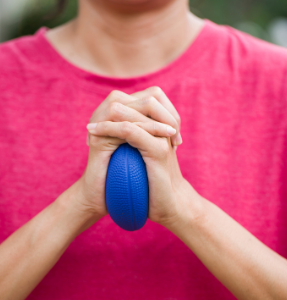
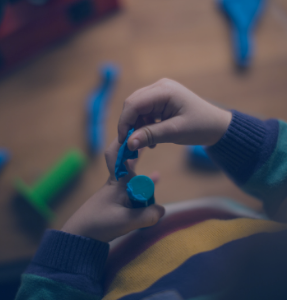
Spinners for classroom learning
These objects are designed for sensory play. The tactile feel, like bumps or ridges, are great for school. They are discreet and can be easily handled while sitting at a desk and maintaining eye contact with an instructor.
Tactile play helps students with alertness and focus, allowing them to pay attention to the teacher. These are awesome products for their price.
Quiet fiddle
Many fidget spinners can make clicking or tapping sounds which can be distracting in a school. Luckily there are quiet fidgets that children can use. Toddlers can handle silent tools at their desks and not cause distraction.
Fidget toys that double as school supplies
Some school supplies double as spinner fun and are easily accessible for students since they already use them! Toymakers also make school supplies intended for fidget use too.
Top ways to help focus, keep calm and ease the mind.
Use these settling objects when little ones seem distracted, need to calm down, or at break time. Classroom-friendly fidgets includes:
- Bumpy gel ball
- Gel-filled rulers
- Rubber rings
- Squeeze erasers
- Rubber pencil grips
- Magnetic metal Magnet
- Fidget spinners
- Bubbles
- Infinity cube
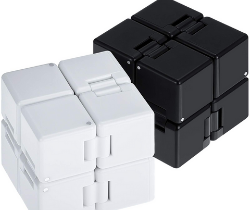
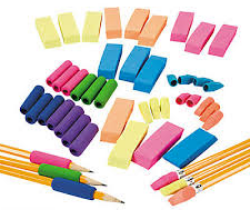
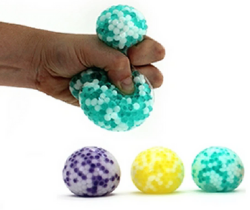
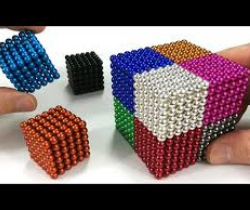
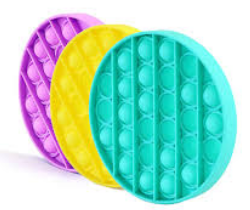
Fidget Toys for Sensory processing
Sensitive issues significantly increase worry in children. There is a relationship between anxiety and sensory processing. A study in the Journal of British Occupational Therapy found participants with sensory sensitivity experienced higher distress levels (3). Journal of British Occupational Therapy.
Much of this stress stems from self-regulation. When tots become unregulated, they have higher agitation levels. Fidgets curb worry and promote self-regulation. The following are sensory-friendly fidget toys:
Calming Fidgets
When people are revved up, certain fiddles can slow them down. Playing with these sorts of toys is relaxing.
To achieve a soothing effect, children will want to use fidgeting items that give them the sensory input they crave.
Awakening Fidgets
While some little ones need calmness, others need to boost energy. When kids are alert, they will achieve better focus and attention.
Stimulating the senses helps people wake up. Visual stimulation and repetition are big energy boosters.
Sensory Friendly Fidget Toys
Some toddlers dealing with anxiety-related issues need fidgets that offer a lot of sensory input like deep pressure. Some gadgets are designed for other body parts that provide extra stimulatory input like pushing feet or weight on laps.
When to use:
Look for signs like restlessness, boredom, impulsivity, or repetitive behaviors, as these are signs of dysregulation. Try out one of these sensory-friendly fiddles:
Squishy balls
Theraputty
Slinkys
Hand Spinners
Stretchy bands for chair feet
Spiky roller ball for feet
Weighted lap pad
square box rollers
Hand Spinners Spiky roller ball for feet Stretchy bands for chair Slinkys
Fiddle toys to help manage emotions
Thinking Putty/Worry Stones
Kids need to think to express their emotions. Give them something to keep their hands busy while thinking and the repetitive nature of playing with objects will help the brain focus on its thoughts. Thinking putty is more than just a toy and without realising, children are giving themselves awesome therapy for their hands and wrists along with saying goodbye to their own stresses
Calming Fidgets
When feeling anxious it is important we find our own ways to find ways to calm down. There are many small devices or objects on the market now that provide a significant soothing effect via deep pressure.
Fidgets for Expressing Self
There are many things just for teens that are socially acceptable and act as great accessories for self-expression. chewelry, bracelets, necklaces, or keychains can be kept close by while letting teens be themselves. For children who like to chew as a method of coping with stress, there are now a wide variety of chew toys that can be worn as necklaces or bracelets.
Best products for all ages who are emotionally unstable
During distressful or emotionally unregulated times these are a definite “go to” for managing emotions:
Thinking putty
Smooth stones
Spiral bracelets or rings
Squishy keychains
Managing behaviour
Problem-solving elements increase focus. The challenge of figuring out a problem makes little ones stick to it. A mini Rubrik’s Cube can easily be pulled out of the pocket to ease stress and is a discreet way of dealing with one’s anxiousness or boredom.
Decrease Impulsivity
Give a child a multi-tasking fidget item and they can stay passively occupied for longer durations. These mechanisms can decrease impulsiveness thanks to the many buttons and dials on the one object.
Feed Sensory Needs
When these needs aren’t met, behaviors also can get out of control. Sensory-friendly fidgeting items s help young people maintain behaviors because it supports self-regulation.
Help manage aggression and bad behaviour with these items
Try these tools to regulate emotions and manage behaviour when you notice fidgeting, moving around, or the inability to sit still for any length of time. Remember it is always a good idea to be proactive and get in early. reach for the toolkit before things escalate and try these devices:
Handheld mazes or mini Rubik’s cubes
Cubes with buttons and dials
Theraputty
Sensory toys
Whether you’re a parent or teacher, you now know how to use the right fidget toy! Adults should model correct behaviours and ways to manage emotions and demonstrate ways to stay on top of stress when it arises. Explicitly teach your children or students ways to deal with their thoughts and emotions and emphasise that fidget items are a tool to enhance their ability to learn, de-stress or concentrate.
Whether used at home or in the classroom, these work as a learning tool or device to keep focussed so that one is able to learn. If used like any other toy, they lose their therapeutic purpose.
Have a designated spot and within reach for easy access when needed.
Kids should know exactly where to get their tools in those anxious moments.
And remember…………………………. all children are different and will have varied needs, so have an assortment in the fidget box that includes items of varied size, colour, smell and texture.
Lastly, always model proper use. If adults can model these supports properly, they are more likely to be useful and not a distraction.
References:
1. https://harkla.co/blogs/special-needs/fidget-toys-adhd-anxiety#:~:text=Some%20people
2. https://link.springer.com/article/10.1007/s10802-015-0011-1
3. https://journals.sagepub.com/doi/abs/10.4276/030802211×13046730116407




